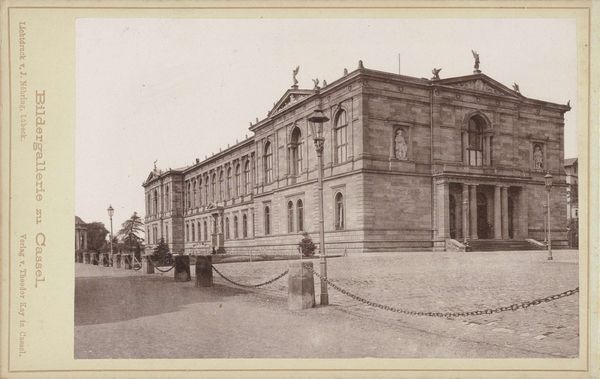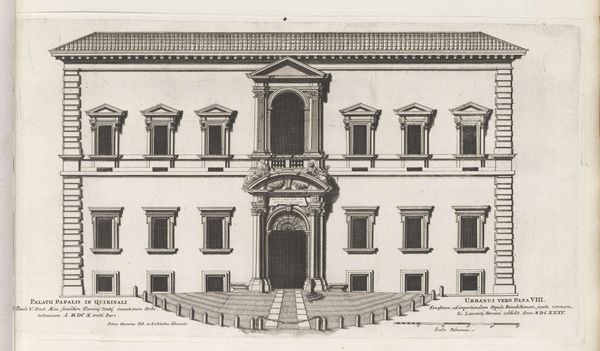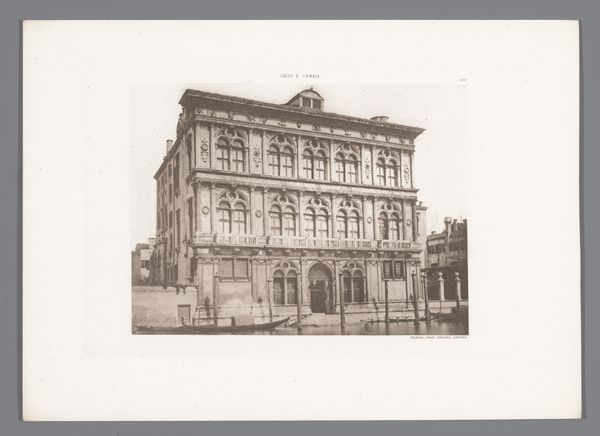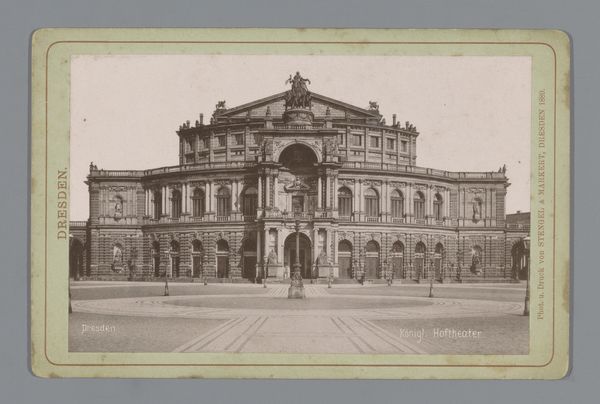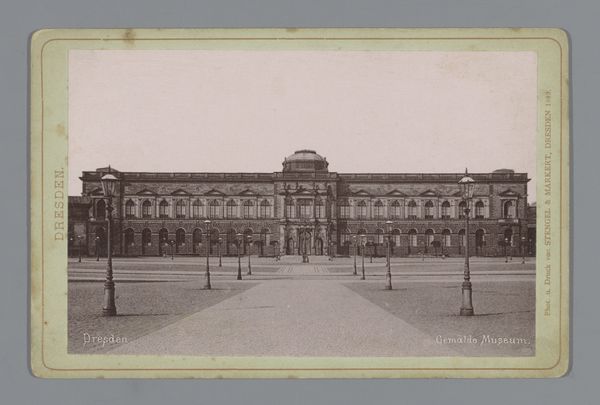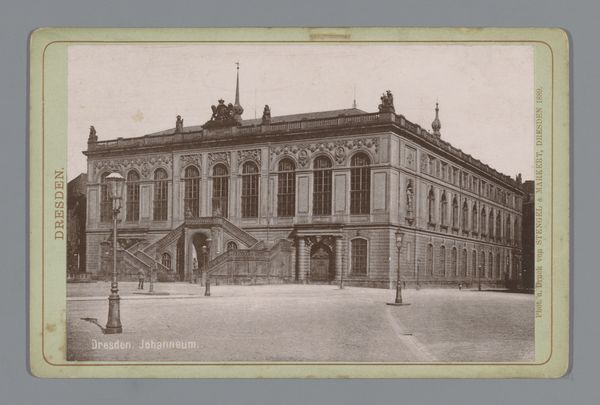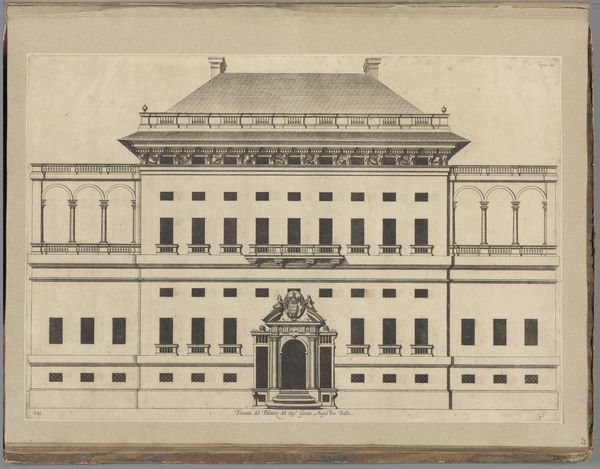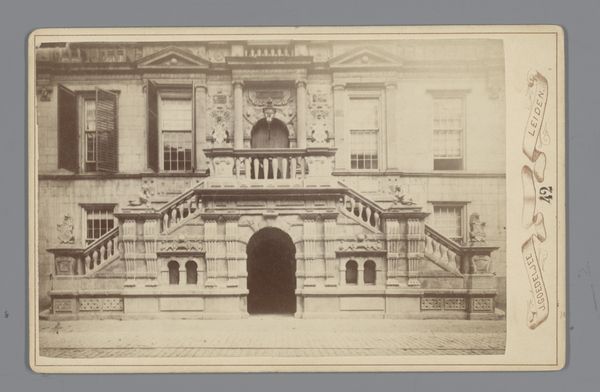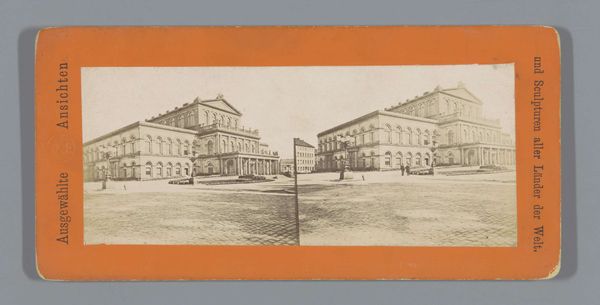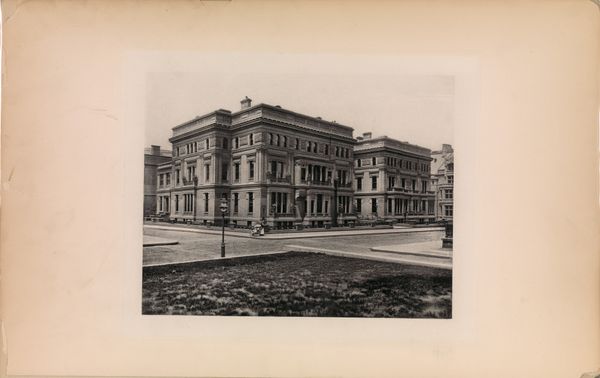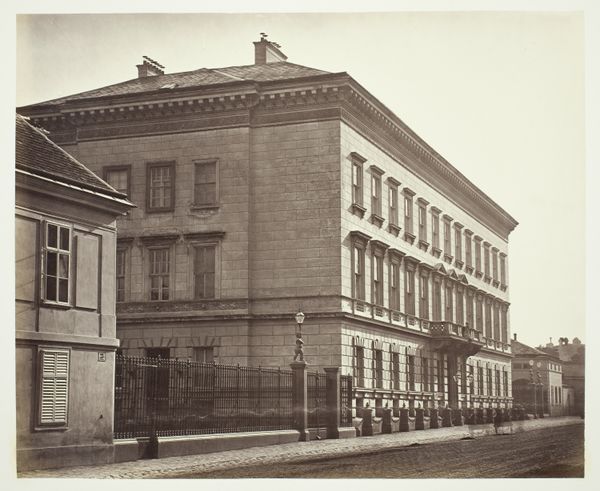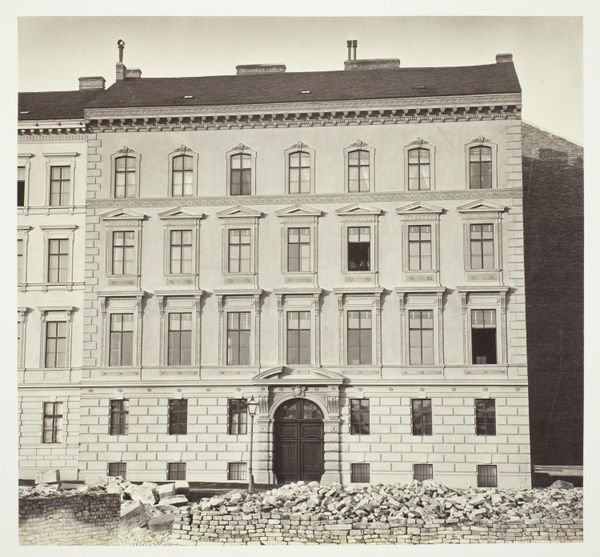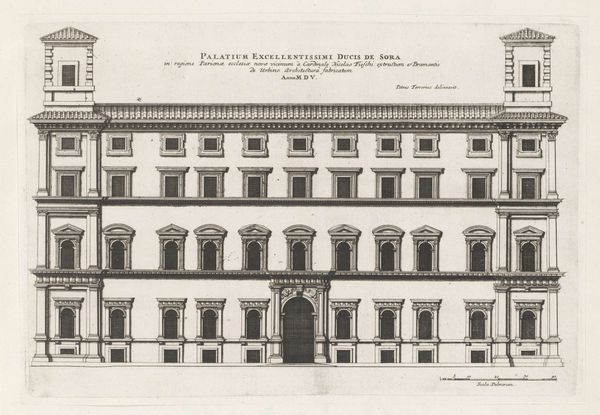
Dimensions: image: 169 x 229 mm
Copyright: © Estate of Albert Renger-Patzsch / DACS 2014 | CC-BY-NC-ND 4.0 DEED, Photo: Tate
Editor: This is Albert Renger-Patzsch's photograph, "Picture Gallery Dresden." The stoic facade feels imposing and very German somehow. What do you see in this piece? Curator: The photograph's stark realism invites a critical dialogue about power, representation, and cultural heritage. Consider the Neue Sachlichkeit movement – how does Renger-Patzsch’s objective approach both reveal and conceal the social realities embedded in this architectural monument? Editor: So, it's not just about the building itself, but about what it represents? Curator: Precisely. The gallery, a repository of cultural capital, begs questions about who controls the narrative, whose stories are told, and who is excluded. The seemingly objective gaze of the camera has a politics. What is objectivity anyway? Editor: It's a bit unsettling to think of even photographs as having a political slant. Curator: Indeed. Perhaps this photograph, seemingly so straightforward, is actually asking us to interrogate the very foundations upon which our cultural institutions are built. Editor: It certainly makes me want to dig deeper into the history behind this photograph and the Picture Gallery itself. Curator: Then our conversation has succeeded. Art should provoke these essential questions.
Comments
tate 6 months ago
⋮
http://www.tate.org.uk/art/artworks/renger-patzsch-picture-gallery-dresden-p79956
Join the conversation
Join millions of artists and users on Artera today and experience the ultimate creative platform.
tate 6 months ago
⋮
Picture Gallery Dresden is a black and white photograph picturing a neo-classical building façade. The scene is unpopulated except for ghostly apparitions that appear before the building: blurred figures moving across the courtyard during the long exposure time. The title identifies the building as the Picture Gallery in Dresden, an art gallery housed in the Semper Building (Semperbau). Designed in an austere and restrained neo-classical style by the German architect Gottfried Semper (1803–1879), the gallery opened in 1855 to house the royal collection of Italian renaissance art and Dutch and Flemish painting. By the time this photograph was taken, Dresden had established itself as an important cultural centre.
